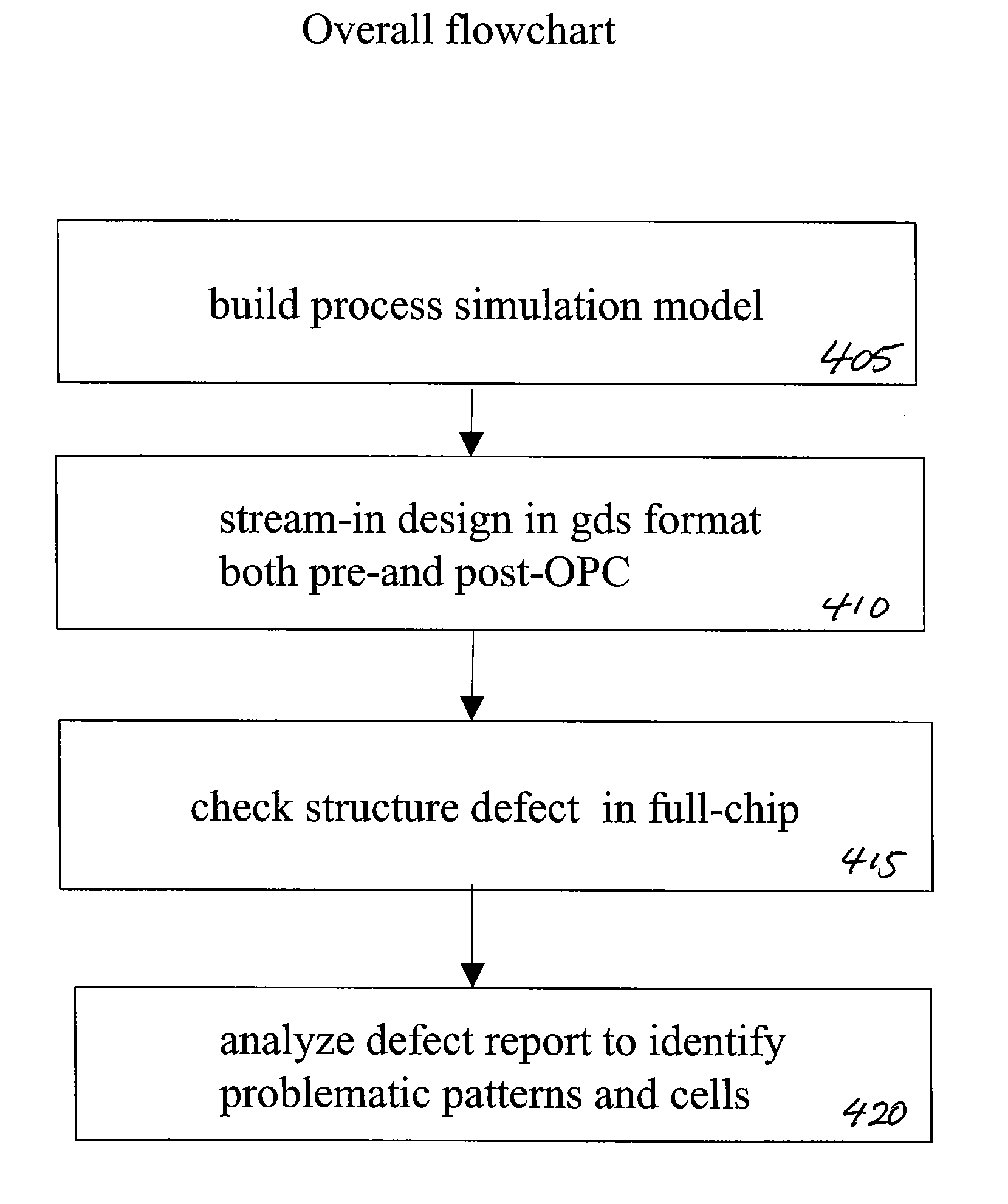Method of checking optical proximity correction data
a technology of optical proximity correction and data verification, applied in the field of electronic design automation (eda) software, can solve the problems that conventional design rules and optical proximity correction (opc) cannot adequately manage the new challenges, and the chip fabrication process becomes so complex, so as to facilitate systematic correction and prevention of defects in integrated circuit layout design, improve the accuracy and performance and speed up the process of optical proximity correction data verification.
- Summary
- Abstract
- Description
- Claims
- Application Information
AI Technical Summary
Benefits of technology
Problems solved by technology
Method used
Image
Examples
Embodiment Construction
[0039]FIG. 1 shows a system of the present invention for estimating the performance of an integrated circuit. FIG. 1 may comprise a computer or digital system used to execute the software of the present invention. For example, the method of the present invention may be performed using a computer workstation. FIG. 1 shows a computer system 1 that includes a monitor 3, screen 5, cabinet 7, keyboard 9, and mouse 11. Mouse 11 may have one or more buttons such as mouse buttons 13. Cabinet 7 houses familiar computer components, some of which are not shown, such as a processor, memory, mass storage devices 17, and the like. Mass storage devices 17 may include mass disk drives, floppy disks, Iomega® ZIP™ disks, magnetic disks, fixed disks, hard disks, Flash disks and storage, CD-ROMs, recordable CDs, DVDs, tape storage, reader, and other similar media, and combinations of these. A binary, machine-executable version, of the software of the present invention may be stored or reside on mass st...
PUM
 Login to View More
Login to View More Abstract
Description
Claims
Application Information
 Login to View More
Login to View More - R&D
- Intellectual Property
- Life Sciences
- Materials
- Tech Scout
- Unparalleled Data Quality
- Higher Quality Content
- 60% Fewer Hallucinations
Browse by: Latest US Patents, China's latest patents, Technical Efficacy Thesaurus, Application Domain, Technology Topic, Popular Technical Reports.
© 2025 PatSnap. All rights reserved.Legal|Privacy policy|Modern Slavery Act Transparency Statement|Sitemap|About US| Contact US: help@patsnap.com



